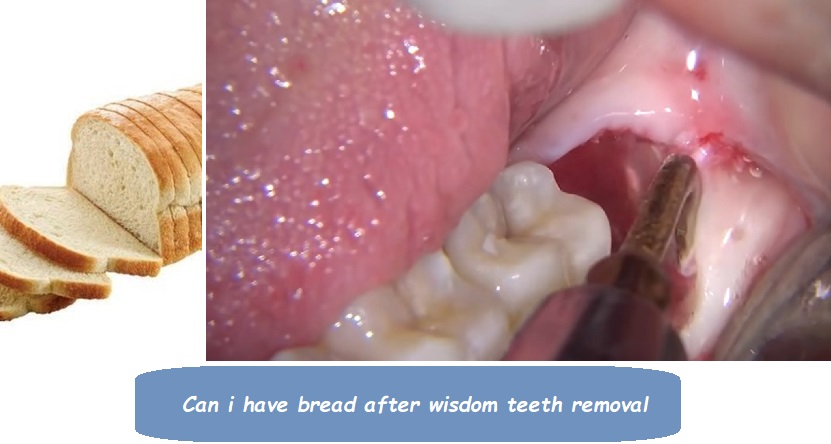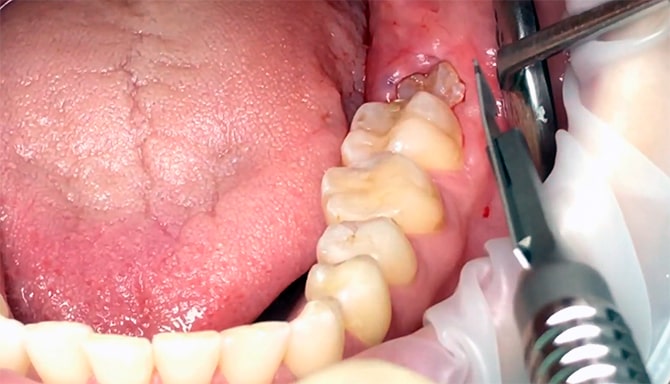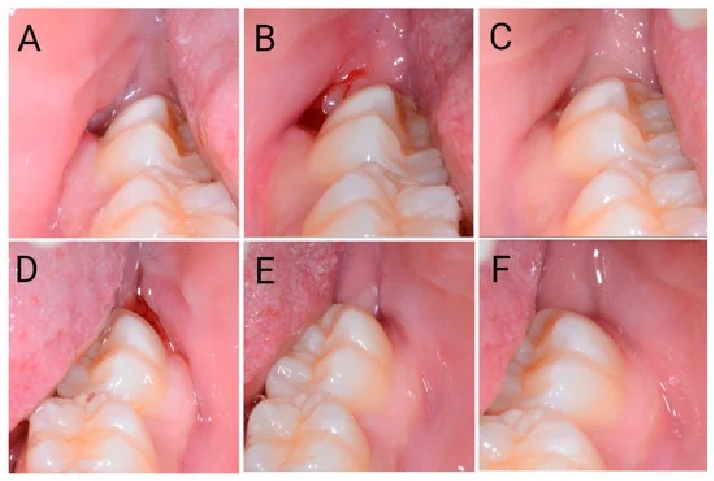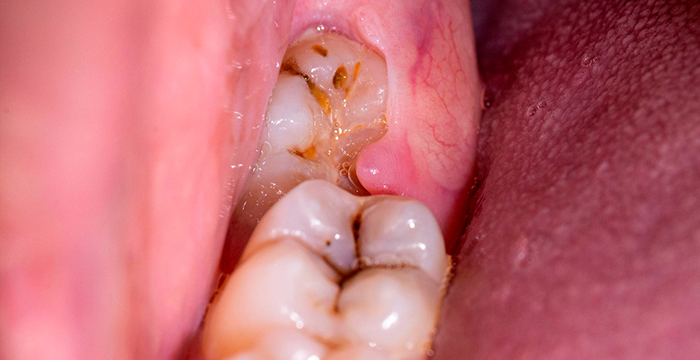Can i have bread after wisdom teeth removal

Can I Have Bread After Wisdom Teeth Removal? A Guide to Post-Surgery Eating
So, you’ve just had your wisdom teeth removed, and now the big question looms: Can I have bread after wisdom teeth removal? While it might seem like a straightforward question, the answer is a bit more nuanced than a simple yes or no. The days following wisdom teeth removal can be a bit tricky when it comes to eating, especially since you want to ensure that your mouth heals properly without causing any unnecessary discomfort or complications.
Let’s dive into everything you need to know about eating bread after wisdom teeth removal, including what types of bread are safe, how soon you can enjoy your favorite sandwiches again, and tips for making the recovery process as smooth as possible.
The Importance of a Soft Diet After Wisdom Teeth Removal
Why You Need to Be Careful With Food Choices
After wisdom teeth removal, your mouth needs time to heal. The surgical sites where your teeth were removed will be sensitive, and eating the wrong foods can cause irritation, pain, or even lead to complications like dry socket—a painful condition where the blood clot that forms in the extraction site becomes dislodged. This is why dentists typically recommend sticking to a soft diet for at least a few days after the surgery.
A soft diet helps ensure that you don’t put too much pressure on the healing sites, reduce the risk of food particles getting stuck in the wounds, and prevent any unnecessary pain or discomfort.
How Long Should You Follow a Soft Diet?
The duration of a soft diet can vary depending on how complex your wisdom teeth removal was and how well you’re healing. Generally, you’ll need to follow a soft diet for at least 3 to 7 days. During this time, you’ll want to avoid hard, crunchy, chewy, or sticky foods that could irritate the surgical sites.
However, as your mouth begins to heal, you can gradually reintroduce more solid foods into your diet. The key is to listen to your body and take it slow—if something feels uncomfortable or causes pain, it’s best to avoid it and try again later.
Can I Have Bread After Wisdom Teeth Removal?
The Short Answer: Yes, But With Conditions
So, can you have bread after wisdom teeth removal? The short answer is yes, but with some important conditions. Not all bread is created equal, and some types of bread may be easier on your mouth than others during the recovery period.
Types of Bread to Consider
Here’s a breakdown of different types of bread and how they might fit into your post-surgery diet:
1. Soft White Bread
Soft white bread is usually the safest option if you’re craving bread after wisdom teeth removal. It’s light, fluffy, and easy to chew, making it less likely to cause irritation to the surgical sites. However, even with soft bread, it’s essential to take small bites and chew slowly to avoid putting too much pressure on your gums.
2. Bread Without Crusts
The crust on bread can be tougher and chewier, which might not be ideal for your healing mouth. Consider removing the crusts from your bread to make it even easier to eat. Soft, crustless sandwiches or bread dipped in broth or soup can be a good way to enjoy bread without causing discomfort.
3. Whole Wheat or Multigrain Bread
While whole wheat and multigrain breads are generally healthier options, they tend to be denser and may contain seeds or grains that can be abrasive to your surgical sites. If you’re a fan of these types of bread, it’s best to wait until your mouth has healed more before reintroducing them into your diet.
4. Toast
Toast is usually a no-go in the immediate days following wisdom teeth removal. The toasting process makes bread harder and crunchier, which can easily irritate or damage the healing gums. If you’re really craving toast, wait until your mouth is more healed, and even then, opt for lightly toasted bread that’s still soft.
5. Bagels, Baguettes, and Other Dense Breads
Bagels, baguettes, and similar dense, chewy breads should be avoided until you’re well into the healing process. These types of bread require a lot of chewing, which can strain your jaw and potentially disturb the healing sites.
Tips for Eating Bread Safely After Wisdom Teeth Removal
1. Stick to Soft Bread Types
As mentioned earlier, soft white bread is your best bet when it comes to eating bread after wisdom teeth removal. It’s easy on the gums and doesn’t require much chewing.
2. Take Small Bites
Whether you’re eating a sandwich or a slice of bread on its own, make sure to take small bites. Large bites can be difficult to chew and might cause discomfort or strain your jaw. Smaller bites are easier to manage and less likely to cause irritation.
3. Chew Slowly and Gently
Even with soft bread, you’ll want to chew slowly and gently. Avoid chewing near the extraction sites if possible, and focus on the opposite side of your mouth. This will help reduce the risk of disturbing the healing areas.
4. Soften the Bread Further
If you’re concerned about the bread being too tough, consider softening it further. You can dip the bread in soup, broth, or even milk to make it easier to chew and swallow. This also adds some flavor, making your meal more enjoyable.
5. Avoid Spreads With Seeds or Chunks
If you’re adding spreads to your bread, choose smooth options like creamy peanut butter, butter, or soft cheese. Avoid anything with seeds, nuts, or chunks, as these can get stuck in the extraction sites and cause irritation or infection.
6. Listen to Your Body
Finally, the most important tip is to listen to your body. If you find that eating bread is uncomfortable or painful, stop and try again in a few days. Everyone’s healing process is different, and it’s essential to be patient and give your mouth the time it needs to recover fully.
Other Soft Foods to Consider Post-Wisdom Teeth Removal
While bread can be a part of your soft diet after wisdom teeth removal, it’s also essential to have a variety of other soft, nutritious foods that can help you heal. Here are some other soft foods that are easy on your mouth and provide the nutrients you need for recovery:
1. Mashed Potatoes
Mashed potatoes are a classic post-surgery food. They’re soft, easy to eat, and can be flavored in various ways to keep things interesting. Whether you prefer them plain, with gravy, or with a bit of butter and garlic, mashed potatoes are a comforting and filling option.
2. Applesauce
Applesauce is another soft food that’s easy to eat after wisdom teeth removal. It’s naturally sweet and provides a good source of fiber and vitamins. Plus, it requires no chewing, making it ideal for the early days of recovery.
3. Yogurt
Yogurt is packed with probiotics, which are great for gut health and overall wellness. Choose plain or flavored yogurt without fruit chunks, as these could get stuck in your surgical sites. Greek yogurt is an excellent option because it’s high in protein, which can help with healing.
4. Smoothies
Smoothies are a great way to get your nutrients when you can’t chew solid foods. Blend together soft fruits like bananas, berries, or mangoes with yogurt or milk. You can even add protein powder or leafy greens like spinach for an extra nutritional boost. Just be sure to avoid using a straw, as the sucking motion can dislodge the blood clot and cause dry socket.
5. Oatmeal or Cream of Wheat
Oatmeal and Cream of Wheat are warm, soft, and easy to eat, making them perfect for post-surgery meals. Just make sure the consistency is smooth, and avoid adding any nuts, seeds, or dried fruits that could be problematic.
6. Scrambled Eggs
Scrambled eggs are soft, full of protein, and easy to chew. They’re also versatile—you can add a bit of cheese for extra flavor or enjoy them plain. Just make sure they’re not too hot when you eat them.
7. Soup
Soup is a great option, especially in the early days after surgery. Choose smooth soups like tomato, pumpkin, or butternut squash. Avoid soups with chunks of meat, vegetables, or anything that requires chewing. You can also add soft noodles or small pasta for some variety.
Foods to Avoid After Wisdom Teeth Removal
While soft bread and other gentle foods are generally safe, there are certain foods you should avoid until your mouth has healed more fully. These include:
1. Crunchy or Hard Foods
Foods like chips, nuts, and raw vegetables are too hard and crunchy for your healing mouth. These foods can easily irritate the surgical sites and should be avoided until your dentist gives you the green light.
2. Spicy Foods
Spicy foods can cause irritation to the sensitive tissues in your mouth. It’s best to avoid anything too spicy until you’re fully healed.
3. Acidic Foods and Drinks
Foods and drinks that are high in acidity, like citrus fruits, tomatoes, and soda, can cause stinging and discomfort in your healing gums. Stick to neutral or alkaline foods to avoid this issue.
4. Sticky or Chewy Foods
Sticky and chewy foods like caramel, gum, and certain candies can easily get stuck in the extraction sites and are difficult to remove. These foods can also cause discomfort and should be avoided.
5. Alcoholic Beverages
Alcohol can irritate the surgical sites and interfere with the healing process. It’s best to avoid alcohol entirely until you’re fully recovered.
6. Hot Foods and Drinks
Hot foods and drinks can cause discomfort and may even prolong the healing process by increasing blood flow to the extraction sites. Stick to lukewarm or cold foods and beverages during the initial recovery period.
How to Speed Up Recovery After Wisdom Teeth Removal
Eating the right foods is just one part of a successful recovery after wisdom teeth removal. Here are some additional tips to help you heal faster and more comfortably:
1. Follow Your Dentist’s Instructions
Your dentist or oral surgeon will give you specific instructions for caring for your mouth after surgery. This may include when to take pain medication, how to clean your mouth, and what activities to avoid. Following these instructions closely will help ensure a smooth recovery.
2. Keep Your Head Elevated
For the first few days after surgery, try to keep your head elevated as much as possible, even when sleeping. This can help reduce swelling and promote faster healing.
3. Apply Ice Packs
Applying ice packs to your cheeks can help reduce swelling and numb the area, making you more comfortable. Use the ice pack for 15 to 20 minutes at a time, with breaks in between.
4. Avoid Physical Activity
Strenuous physical activity can increase blood flow to the extraction sites and lead to more bleeding and swelling. Take it easy for a few days and avoid any heavy lifting or intense exercise.
5. Stay Hydrated
Drinking plenty of water is essential for healing, but be sure to avoid using a straw. The sucking motion can dislodge the blood clot and lead to dry socket, a painful condition that can prolong your recovery.
6. Keep Your Mouth Clean
While it’s important to avoid brushing near the surgical sites for the first 24 hours, you should still keep your mouth clean. Rinse gently with warm salt water starting the day after surgery to keep the area clean and reduce the risk of infection.
Final Thoughts: Can I Have Bread After Wisdom Teeth Removal?
So, can you have bread after wisdom teeth removal? Yes, but with some precautions. Soft white bread without crusts is generally safe to eat in the days following your surgery, as long as you take small bites and chew gently. However, it’s essential to avoid harder, crusty, or dense breads until your mouth has healed more fully.
Remember, your body needs time to heal after wisdom teeth removal, and what you eat plays a crucial role in that process. Sticking to soft, easy-to-eat foods like mashed potatoes, yogurt, and applesauce can help you get through the initial recovery period without causing unnecessary discomfort.
As your mouth heals, you can gradually reintroduce more solid foods into your diet, but always listen to your body. If something feels uncomfortable or causes pain, it’s okay to wait a little longer before trying it again.
Healing after wisdom teeth removal is different for everyone, so be patient with yourself and follow your dentist’s advice. Before you know it, you’ll be back to enjoying all your favorite foods—bread included—without any worries.









